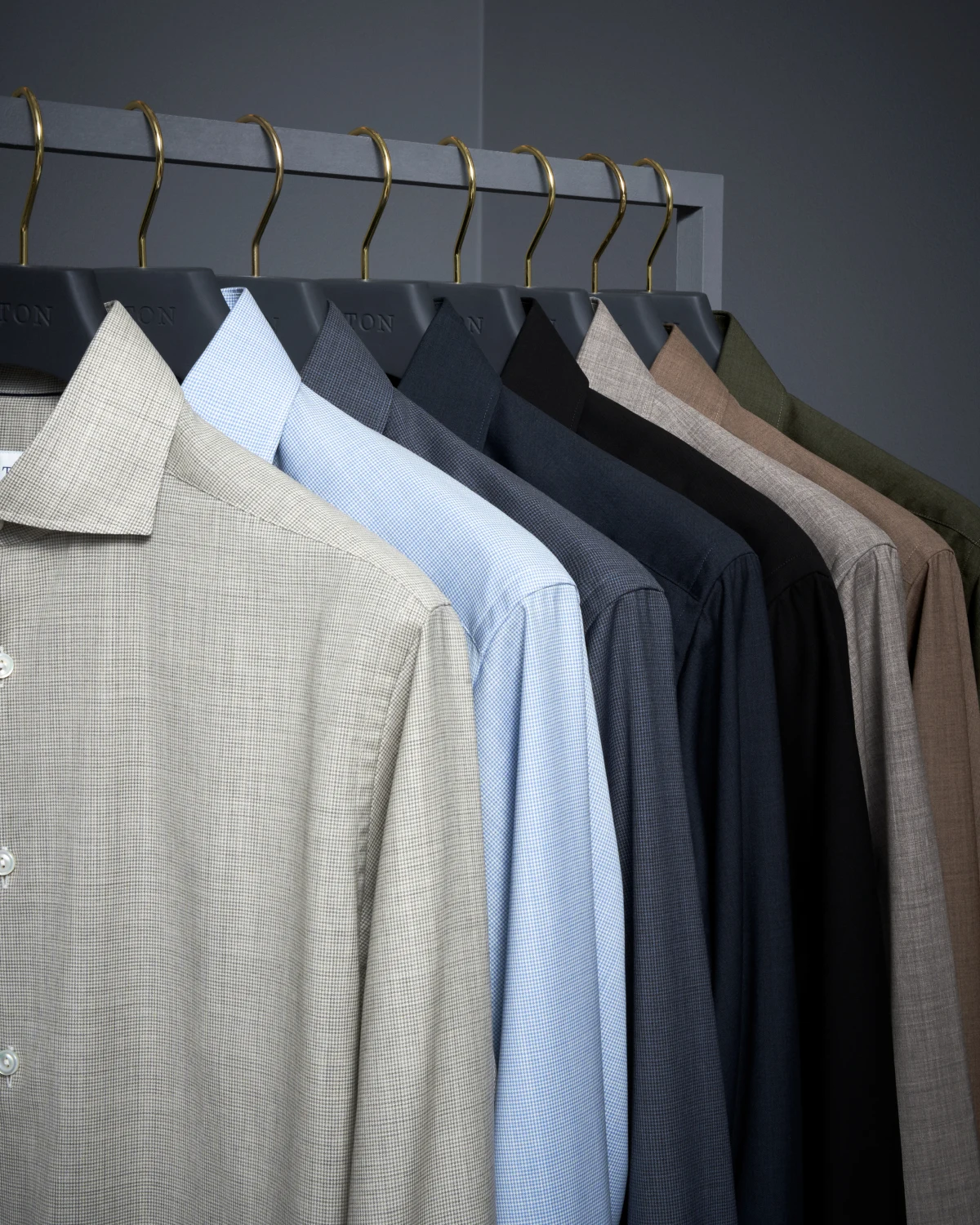
Invented by Nature, Elevated by Eton – The Merino Wool Shirt
Guides
By: Eton • 4 minThe Merino Wool Shirt
Reda x Eton: Unveiling a Fusion of Craftsmanship and Nature's Finest Wool
Eton delves into the heart of sartorial excellence at the renowned Reda mill in Biella, Italy. Invented by nature and designed to shield from the winter's chilly embrace and the summer’s undeniable heat, Merino wool–discover the intricacies behind behind this extraordinary fiber.
Thermo-regulating, breathable, quick-drying, moisture-wicking, odor-resistant, naturally flexible, wrinkle-resistant, and aesthetically pleasing–these qualities make it truly unique. Francesco Botto Poala, President & Chief Operating Officer of Successori Reda, aptly captures the essence of Merino wool: "If an engineer were tasked to develop a new fiber with all the benefits of Merino wool, it would be impossible. You can copy one or two of its characteristics, but combining all in one single fiber would be impossible."
Nestled at the foot of the Italian Alps, the Reda mill has been making fine wool fabrics since 1865. Founded by Carlo Reda and currently overseen by the Botto Poala family since 1919, the mill stands at the intersection of tradition and innovation. The pure and natural soft water flowing from the mountains was once a key asset in weaving fine wool fabrics and has made Biella home to the world’s finest wool mills. Although the area has since witnessed a modern transformation into regenerated water systems, the profound knowledge and passion persists in this historic region.
Specializing in fine, superfine, and ultra-fine merino wool—the highest grades available—Reda's fully vertical production process spans from merino sheep farms in New Zealand to spinning, weaving, and fabric finishing. Francesco Botto Poala emphasizes the significance of controlling the entire process,
"The control of the entire process makes the difference. You can add value to every single step and always improve to make a better fabric, while equally minimizing the carbon footprint."
The complex process of creating fine wool fabrics involves meticulous steps. Once the wool is sheared from the sheep, it is reviewed under a microscope to define the thickness of the raw wool fiber. For the shirting fabrics, Reda uses Super 120 wool, which translates to a fiber diameter of 17.75 micrometers, also called superfine merino—the second-highest grade of merino wool. This grading is characterized by its softness, fineness, and durability, making it great for everyday use.
The raw wool, known in industry as greasy wool, makes its way to a cutting-edge washing facility just beyond the borders of Biella. Here, it undergoes a meticulous process of washing, cleaning, and combing. Post this rejuvenating treatment, the wool undergoes a striking transformation through the dyeing phase.
Reda's shirting fabrics boast a distinctive top-dyed technique. In this method, the wool is dyed before it's spun into yarn. This not only yields a luxuriously rich mélange effect by seamlessly blending various hues of combed wool during spinning but also achieves a reduction in dyeing pigment usage. At this crucial stage, the wool acts like a sponge, effortlessly absorbing colors and contributing to the creation of a palette that resonates with sophistication and modernity.
It might be easy to assume that wool fabrics are exclusively reserved for suits and tailored garments. However, the reality is quite the opposite. Through over a decade of dedicated research, Reda has innovatively developed shirting fabrics that excel in unique performance.





"When you wear it directly against your skin, the benefits of Merino become more apparent in a shirt compared to, for instance, a suit jacket. Many associate Merino with winter, but its thermoregulatory properties make it equally suitable for warmer weather. I recently returned from a trip to New Zealand, where temperatures soared close to 30ºC, and wearing our merino wool shirt fabric was a true pleasure." - Francesco Botto Poala


In the Fall Winter 2023 season, Eton collaborated with Reda to bring forth knowledge of Reda's fine wool knowledge and Eton's shirt craftsmanship. The collection features overshirts and classic dress shirts designed for versatility and an incredible wearing experience.
Our emphasis has been on maximizing softness to truly elevate the fabric's tactile appeal. For instance, we've integrated extra soft interlining in both the collar and cuffs, complemented by a wide spread collar with removable collar stays. The result is a versatile shirt that feels incredibly luxurious to wear. Its inherent elegance makes it a perfect match for a suit and tie, while also effortlessly complementing a more casual look under a knitted cardigan," noted by Olof Enckell, Head of Assortment at Eton Shirts.
Caring for your merino wool shirt is a straightforward affair.
It's machine washable using the wool program, preferably with other wool garments and using a washing bag to minimize wear, using a mild detergent. Merino's low maintenance allows for less frequent washing, with simple airing often sufficing to keep it fresh.
Discover our selection of Merino Wool Shirts—where nature meets craftsmanship.



